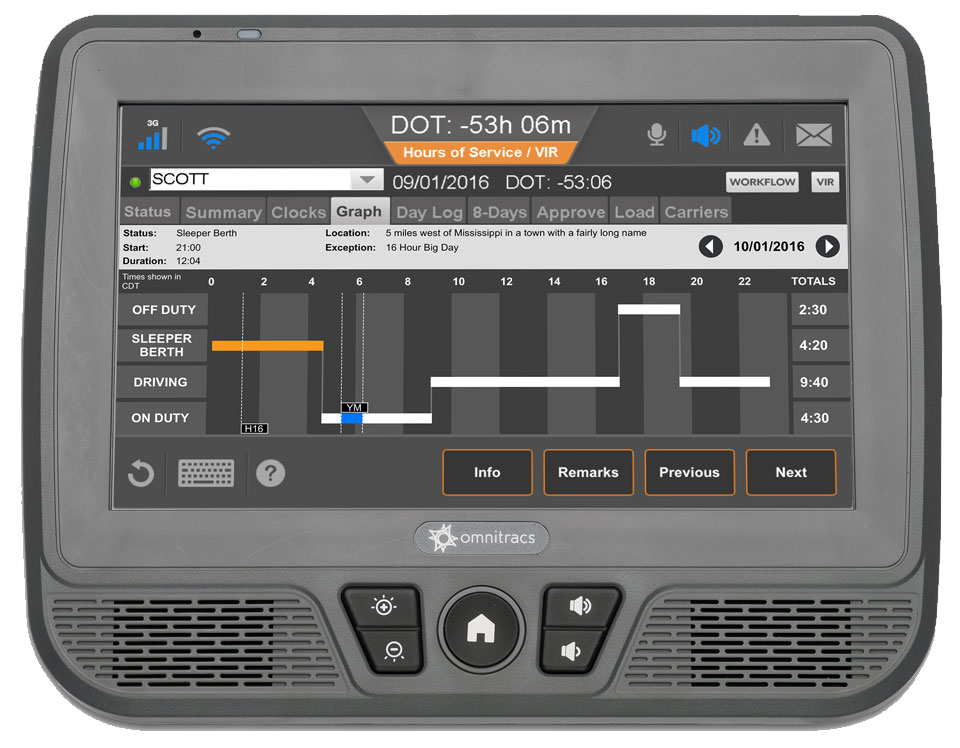
https://www.truckinginfo.com/10125608/what-you-need-to-know-about-hours-of-service-changes
Joe DeLorenzo, acting associate administrator for enforcement at the Federal Motor Carrier Safety Administration, shared some insight and advice regarding the changes.
Adverse Driving Conditions
Under the current definition, adverse driving conditions means snow, sleet, fog, or other adverse weather conditions, a highway covered with snow or ice, or unusual road and traffic conditions, “none of which were apparent on the basis of information known to the person dispatching the run at the time it was begun.”
The new definition says the adverse conditions “were not known, or could not reasonably be known, to a driver immediately prior to beginning the duty day or immediately before beginning driving after a qualifying rest break or sleeper berth period, or a motor carrier immediately prior to dispatching the driver.”
For instance, say a driver is 15 miles from his destination when there is a gravel spill on the bridge ahead, and that bridge is the only way to get there. He has only one hour left of driving time, and only one hour left on the 14-hour clock. He can stop at the next exit for up to two hours until the road is clear and still have time to get to the destination without violating hours of service rules. Under the current rules, he could only have stopped for an hour, because although the adverse driving regs allow him to extend his driving hours by two hours, they don’t allow the workday to be extended. Under the new rules, the 14-hour clock can be extended to 16 hours in the case of adverse driving conditions.
“One of the big changes is that a lot of this decision gets put in the hand of a driver,” DeLorenzo said. “Really try to focus on the fact that a driver has to make the decision after the last qualifying break.”
DeLorenzo cautioned that drivers need to annotate, and include details about, the adverse driving condition in their log or ELD.
He also said to keep in mind that this rule is for conditions that couldn’t be anticipated. “Traffic at 5 p.m. in DC is not unanticipated; it’s something that could be planned around, so you aren’t able to use that exception in that case,” he said.
30-Minute Break
Under the current hours of service rules, property-carrying drivers are required to take a 30-minute break after eight hours on duty. The new rule, DeLorenzo said, “makes a pretty significant change to that.” Under the new rules, a 30-minute break is only required after a driver drives for eight hours – driving time rather than all on-duty time.
Another significant change is that under the current rules, that break must be off-duty or sleeper berth time. Now it can be anything other than driving time – including on-duty not driving.
“So now you can do something like, I’m going to stop and fuel, that takes me 15 minutes, tat’s on-duty time; and now I’m going to run in, grab a cup of coffee, use the restroom, for the other 15 minutes,” which can be off-duty. “It gives more flexibility. So if any time during that day you take [at least] 30 minutes off driving, say you have to stop at a shipper, that’s going to cover you.”
Sleeper Berth Splits
New sleeper-berth rules allow a driver to split the required 10 hours off, as long as one of those periods is at least two hours, the other is at least 7 hours, and they total 10 hours. This can be any combination, such as 2 and 8, 3 and 7, or 2.5 and 7.5.
“If you do this properly, neither of those counts against the 14-hour driving window,” DeLorenzo explained, also noting that the shorter period doesn’t have to be sleeper berth – it could be off-duty/not driving. The longer period must be sleeper berth time.
Roadside inspections
DeLorenzo also spoke about ERODS, the program law enforcement officials use when reviewing a driver’s ELD data at roadside.
“Make sure your drivers know how to do the data transfer,” he advised. In most cases, officers will request that drivers use the web services option. “It’s the fastest, most reliable way to get that transfer done.”
Some of the things that the system will flag include unidentified driving time, which could happen if a driver is not logged in when the vehicle is moning. Another is when drivers entered or edited an event. “Sometimes those things can be legit, but it does show how that entry was made, when it was made, and the specifics of it,” so the inspector has that information to use in the inspection.
When Do The New Hours of Service Changes Take Effect?
Changes to truck driver hours of service rules take effect at
12 a.m. eastern time on Sept. 29, meaning they’ll take effect earlier for drivers in other time zones – drivers on the West Coast, for instance, will start operating under the new rules at 9 p.m. Sept. 28.